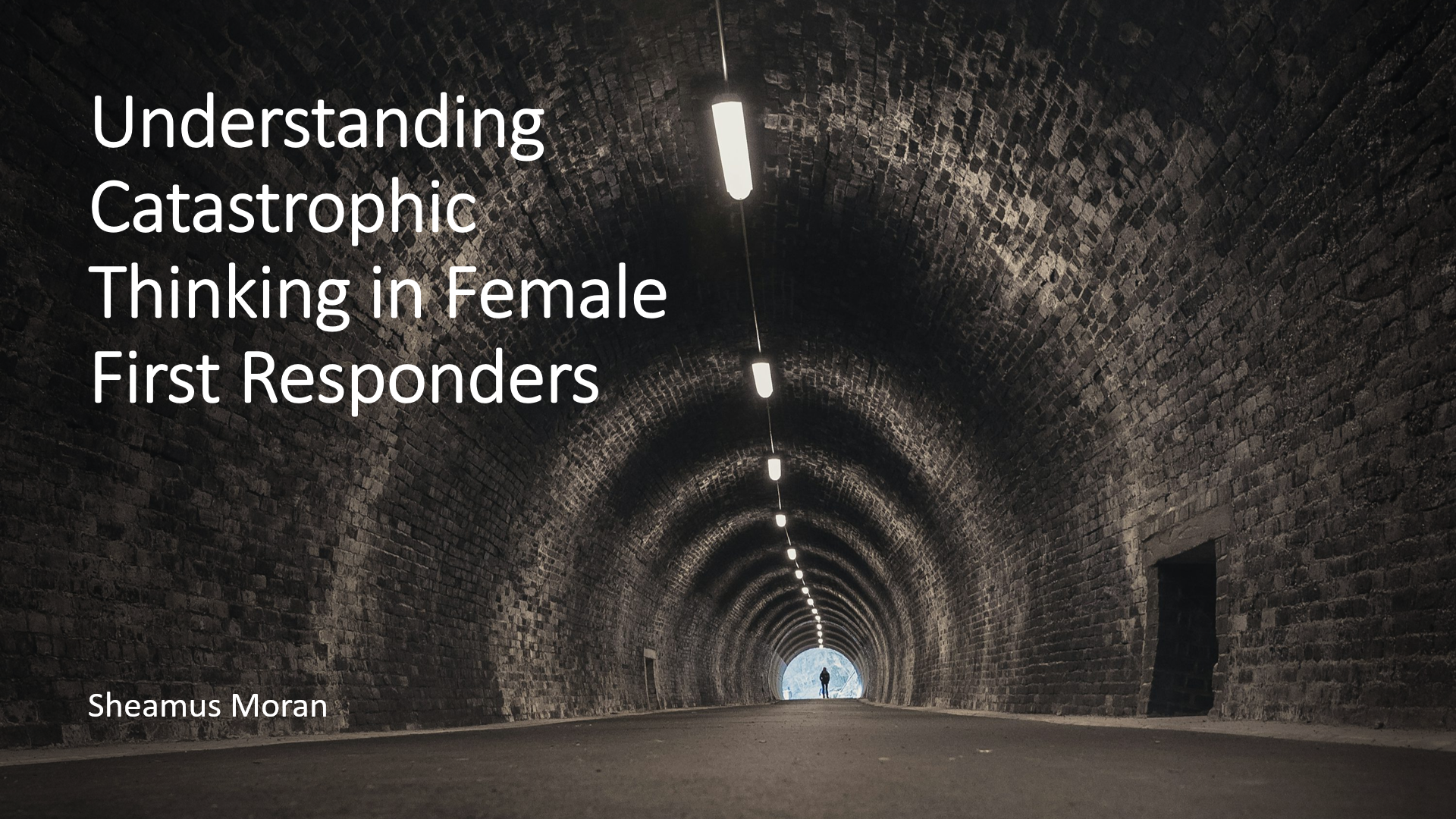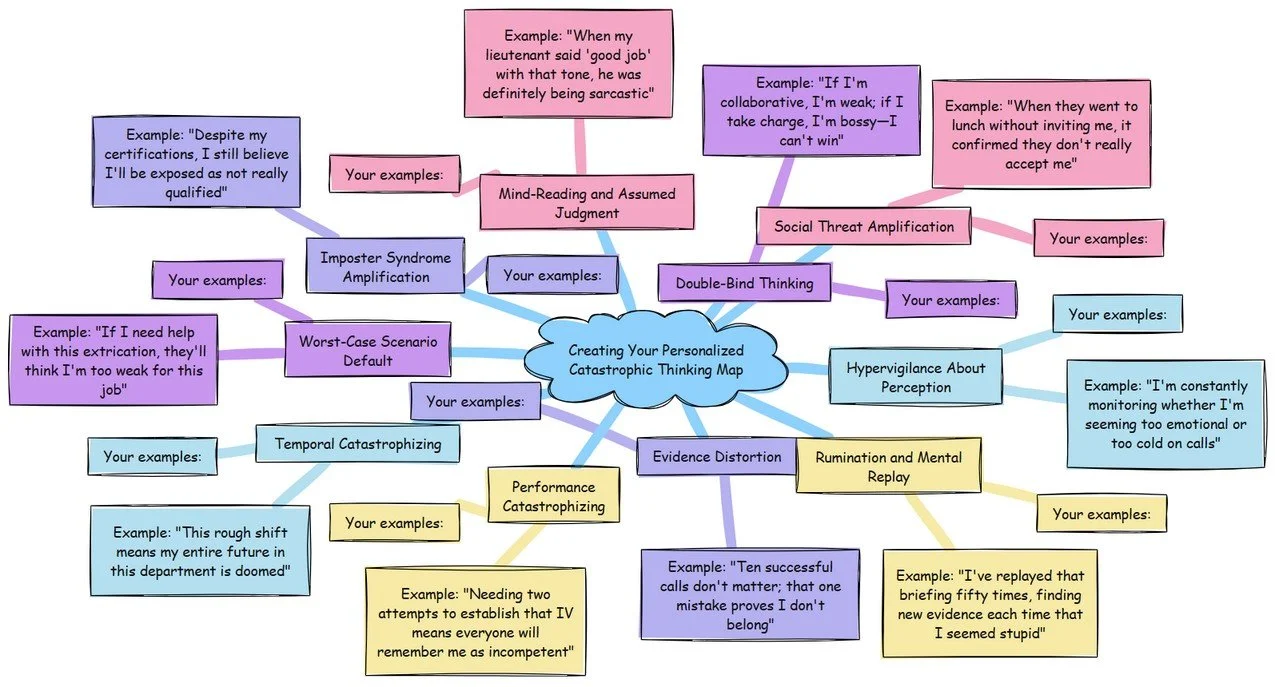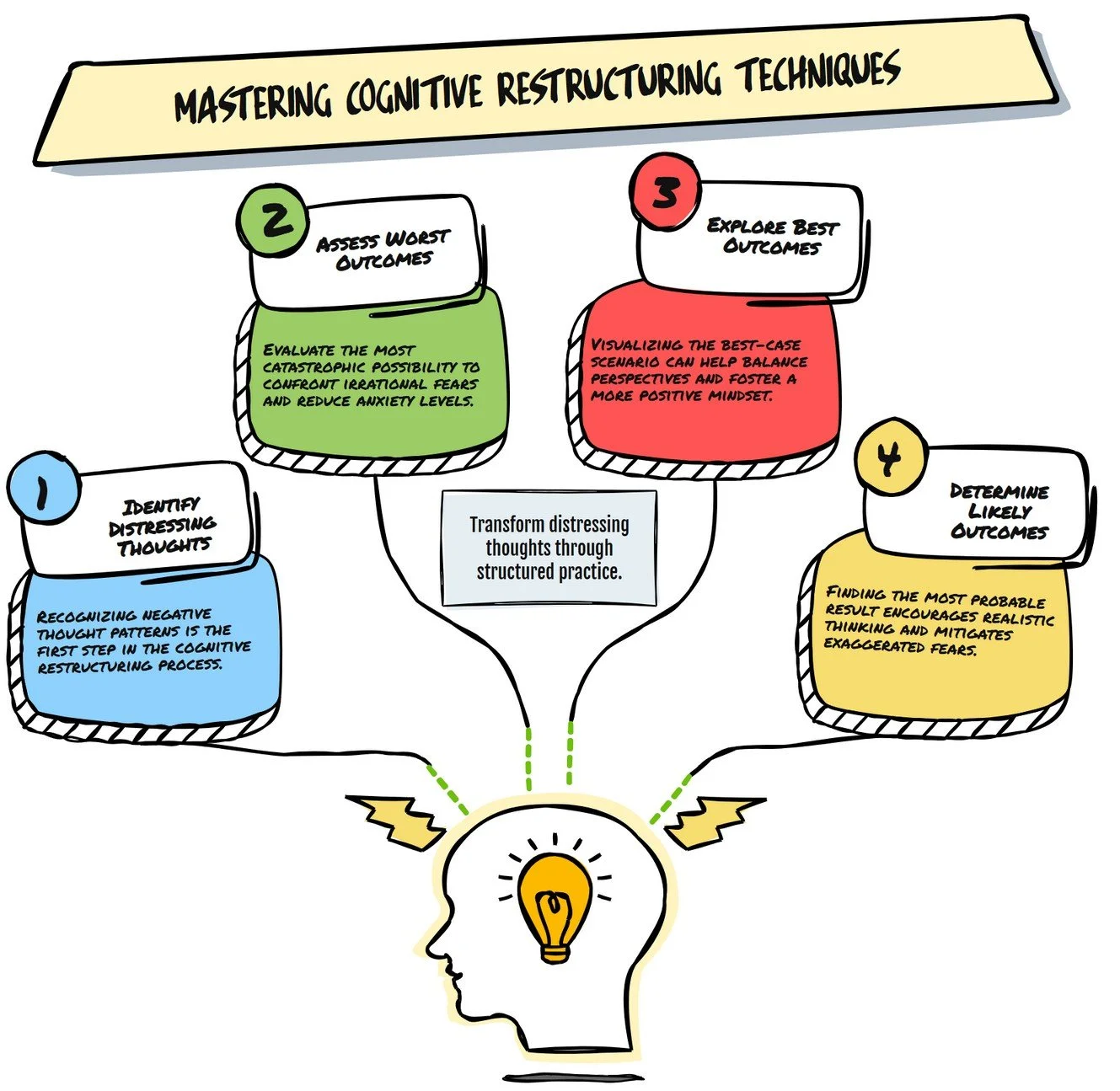
When the Light at the End of the Tunnel Feels Like a Train
This self-assessment is designed to help female first responders identify, understand, and develop effective responses to catastrophic thinking patterns—those automatic mental processes that jump to worst-case scenarios and interpret neutral situations as threatening. While hypervigilance and threat assessment are essential skills on emergency scenes, when these patterns extend into every aspect of professional and personal life, they create unnecessary suffering and can undermine both performance and wellbeing.
The challenge of catastrophic thinking lies in its deceptive nature. These patterns often masquerade as necessary caution, professional vigilance, or realistic assessment. They feel protective even as they drain your energy, damage relationships, and distort your perception of reality. The gap between what you imagine others are thinking and what they're actually thinking can become a chasm—one that isolates you from genuine support while you battle perceived threats that may not exist.
This assessment explores the various dimensions of catastrophic thinking specific to women in emergency services and helps you develop a personalized understanding of your vulnerability patterns and protective strategies. There are no right or wrong answers—the goal is to promote honest reflection and identify areas where you can challenge distorted thinking patterns and build more balanced perspectives.



